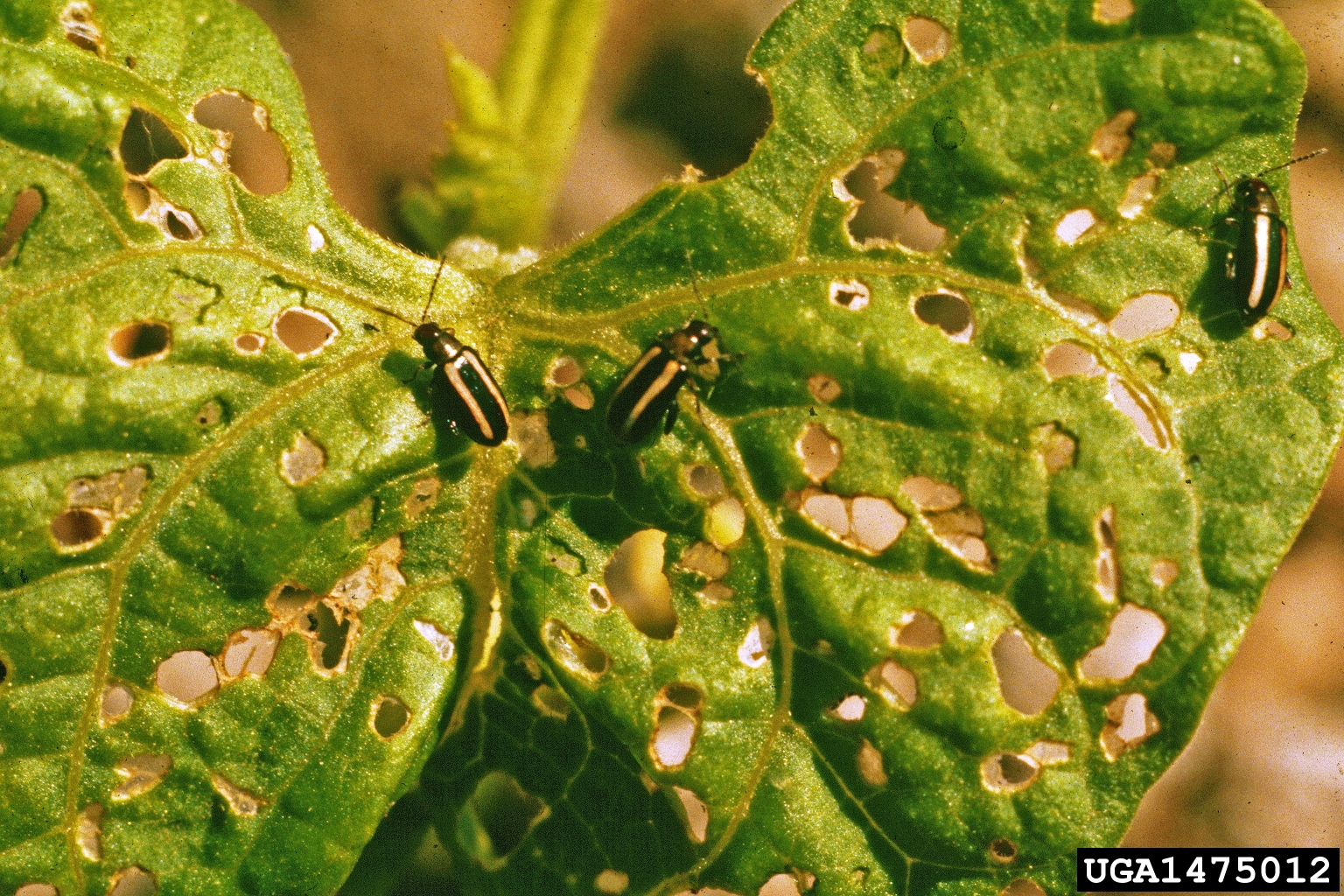R. L. Hines and W. D. Hutchison
Department of Entomology, University of Minnesota
Introduction
Flea beetles are occasional pests on cole crops most often inflicting significant damage on early-planted crops. The three most common flea beetles on cole crops include the pale striped flea beetle, Systena blanda, the western black flea beetle, Phyllotreta pusilla, and the crucifer flea beetle, Phyllotreta cruciferae. In addition, several other species of flea beetles attack a variety of vegetable crops, including: the potato flea beetle, Epitrix cucumeris, corn flea beetle, Chaetocnema pulicaria, and the spinach flea beetle, Disonycha xanthomelas.



Biology & Life Cycle
Adult flea beetles range from 1/16" (potato and striped beetles) to up to ½" in length for the spinach flea beetle. They are all characterized by enlarged hind legs for jumping. They vary in color from black to metallic gray. Flea beetles overwinter as adults in leaf litter, hedgerows, windbreaks, and wooded areas. In early spring the adults become active and the female flea beetle lays her eggs in small holes in roots or soil. Following egg hatch, and small white larvae feed on the roots of the newly planted seedlings, causing little to no damage to the plants. Larvae then pupate in an earthen cell. There are usually 1 to 2 generations per year.
Damage

Adult flea beetles cause the most damage by feeding on cotyledons, stems, and foliage. Their feeding causes a "shothole" appearance to the plants. The damage is unique and similar for nearly all species-a series of small (usually <1/8") feeding holes on the leaves. A heavy beetle attack will result in wilted or stunted plants. Transplants can with stand more damage than plants started from seed. Although most vegetable crops can tolerate 20-30% defoliation, crop loss may also result in uneven stands.
Management
Trap Crop
Using trap crops to control flea beetles have proven effective in many settings. To be effective, the trap crop needs to be planted well before the primary crop is planted, since adult flea beetles will be attracted to the tallest, earliest crops available. The trap crop does not need to be very large (e.g., 1% of anticipated acreage) and is usually planted along a field edge. Once beetles are actively feeding in these trap crops, they can be sprayed with a labeled insecticide - minimizing the development of economically damaging infestations in the primary cole crop. The primary acreage should typically be planted 7-14 days after the trap crop, to encourage flea beetles to stay in the trap crop area.
Biological Control
Microctonus vittatae Muesebeck is a native braconid wasp found more commonly in the eastern half of the U.S. Female M. vittatae can lay fertile eggs without mating; therefore, male M. vittatae are very rare. Not only is the adult flea beetle killed with the emergence of M. vittatae, but the larval wasp sterilizes the female flea beetle while developing in her body.
Monitoring, Thresholds, & Chemical Control
Begin monitoring for flea beetles soon after planting. Given their mobility, you will be looking for feeding damage. Treatment on all cole crops is recommended when 10-20% of a stand shows feeding damage. Treatment may be needed sooner where cole crops are started from seed as heavy infestions will destroy seedlings before they emerge. Feeding damage and beetle populations can be spotty across a field (or along field edges) so spot-treatments within fields can be effective, reducing insecticide use and costs. To ensure proper use of insecticides, refer to the most recent edition of the Midwest Vegetable Production Guide.
References
Growing Broccoli and Cauliflower in Minnesota (FO-1862)
Cornell University. 2003. Vegetable Disease ID and Management http://vegetablemdonline.ppath.cornell.edu/
Diseases of Cole Crops (MN) (FS-1169)
Commercial Vegetable Pest Management Production Guide
Alternatives in Insect Management (IL) (BU 5854)
Biological Control of Insect Pests of Cabbage and Other Cruicifers (WI) (BU-6198)
Biological Control of Insects and Mites (BU-6428)
Ch.8 of "Vegetable Insect Management with Emphasis on the Midwest" Meister Publishing Co. Willoughby, Ohio.